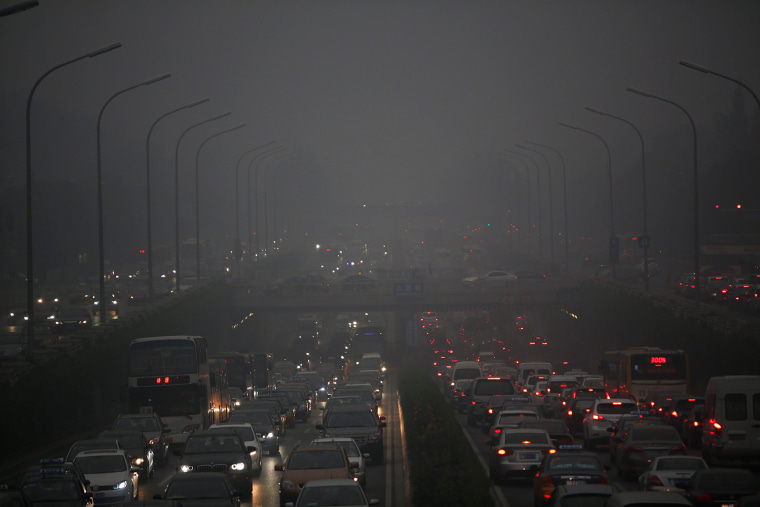Keep the rain boots and slickers handy, suggests new research that indicates the world will get wetter as cities rein in air pollution from power plants, factories and cars.
Climate scientists thought global precipitation would rise in step with rising greenhouse gases that are warming the atmosphere, allowing it to hold more water. But that has not occurred, according to Peter Stott, a climate scientist with the Met Office Hadley Center in the United Kingdom.
"The explanation that we are showing here is that it has not gone up because of the effect of aerosols, which have counteracted the effect of greenhouse gases," he told NBC News.
Aerosols form, for example, when coal is burned and cigarettes are smoked. Some linger in the atmosphere and influence the global climate.
According to the new research, these aerosols weakened the amount of rain that fell globally between the 1950s and 1980s, a time when aerosol concentrations were rising. In the past few decades, as air pollution has been reduced in Europe and North America, rainfall has increased.
"There is already an increasing trend going on since we started to stabilize aerosols in the global atmosphere," Stott said, adding that if the air is cleaned up in Asia, "then that would potentially mean that the rate would increase, an increase in the global rainfall as a result."
Study method questioned
Before running out to the store for a new umbrella, know that "there is reason to doubt the results" of the new study, Kevin Trenberth, a renowned expert on the effects of climate change on the global water cycle at the National Center for Atmospheric Research in Colorado, told NBC News in an email.
A key flaw, he explained, is the study relies on land precipitation data to show global trends. This is largely because rainfall data over the oceans is unavailable prior to 1979. While the team could have at least checked to see if their land values match the global values after 1979, "they don't," Trenberth said.
"In fact, the biggest changes in land precipitation are from the El Nino phenomenon: There is more rain on land with La Nina events while there is a lot more rain over the oceans in El Nino events," he said.
Globally, El Nino and La Nina largely cancel each other out. "This was not factored into the analysis and it is a major shortcoming," Trenberth said. "The increase in land precipitation in recent years is because of more frequent La Ninas. It is not clear that climate change played a role."
Stott, in a followup email, said climate models indicate that the global precipitation changes over land "are pretty indicative" of the changes "over both land and ocean." But Trenberth said models "generally do a poor job in simulating precipitation patterns and their changes with the seasons."
Regional effects of aerosols
The study, published Sunday in the journal Nature Climate Change, analyzed climate model simulations to tease out the effect of air pollution on the global water cycle. Next up is to better understand the interactions between greenhouse gases, aerosols and natural weather variability at the local level, Stott noted.
"When you look regionally, what we are seeing is changes in local rainfall patterns, and particularly increases in rainfall at high latitudes of the Northern Hemisphere," he said. The incidence of downpours, too, is on the rise, he added. "There is more moisture in the atmosphere now, so there is a greater incidence of the extreme rainfall events."
According to Trenberth, aerosols likely have a local effect on rainfall patterns. Such an effect may be on display in China today, he noted. While the new study falls short of showing that level of detail, "a message is that we have to pay attention to aerosols for local rainfall and I agree with that."
John Roach is a contributing writer for NBC News. To learn more about him, visit his website.
